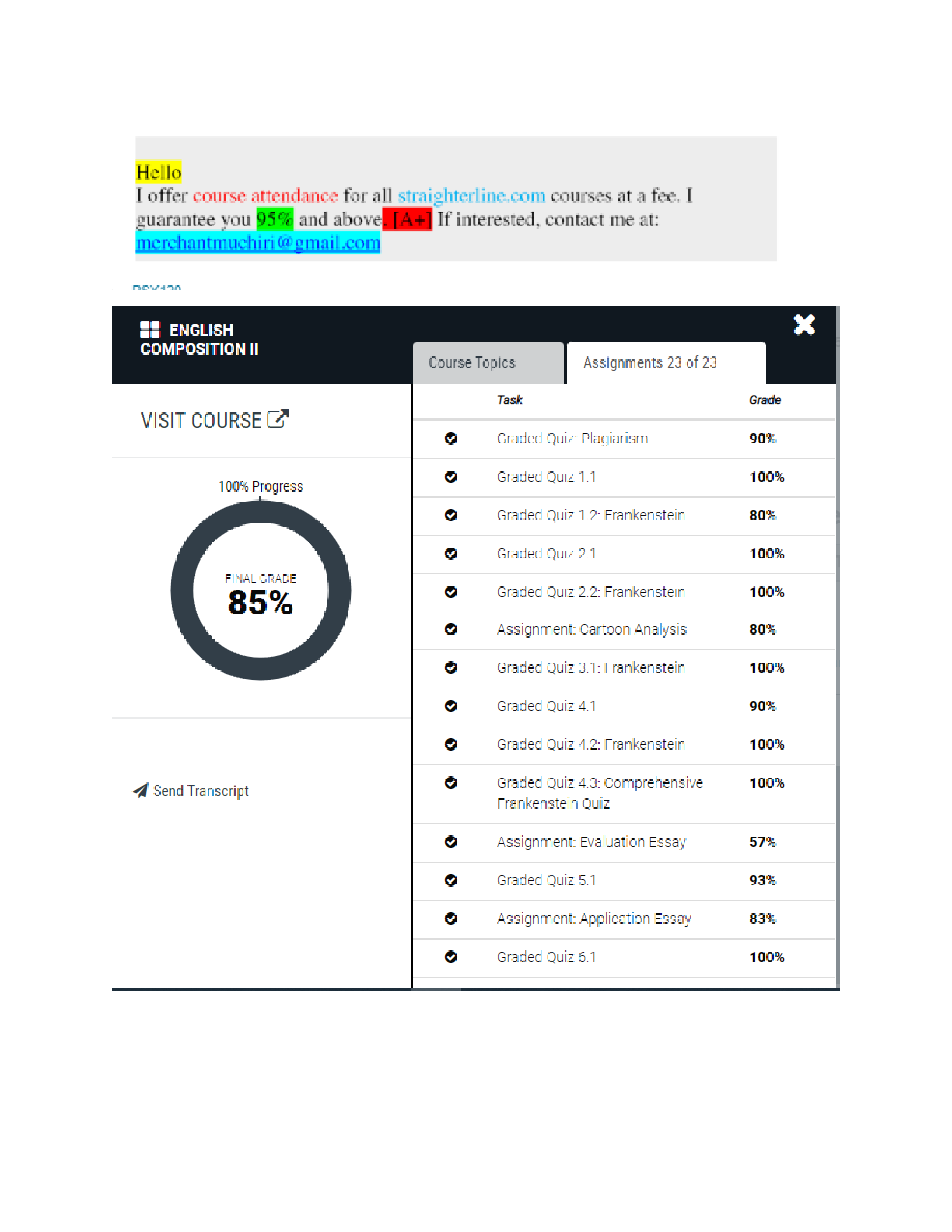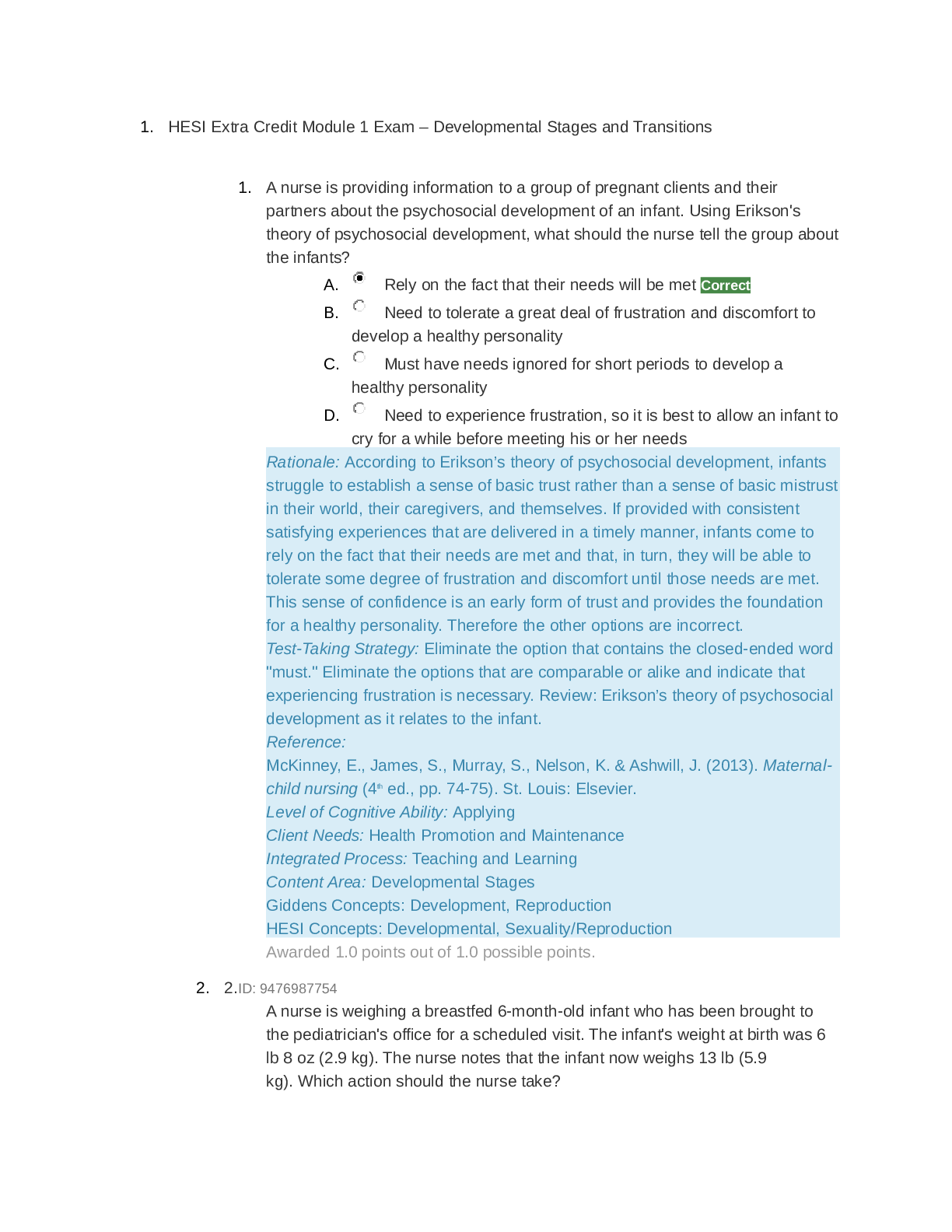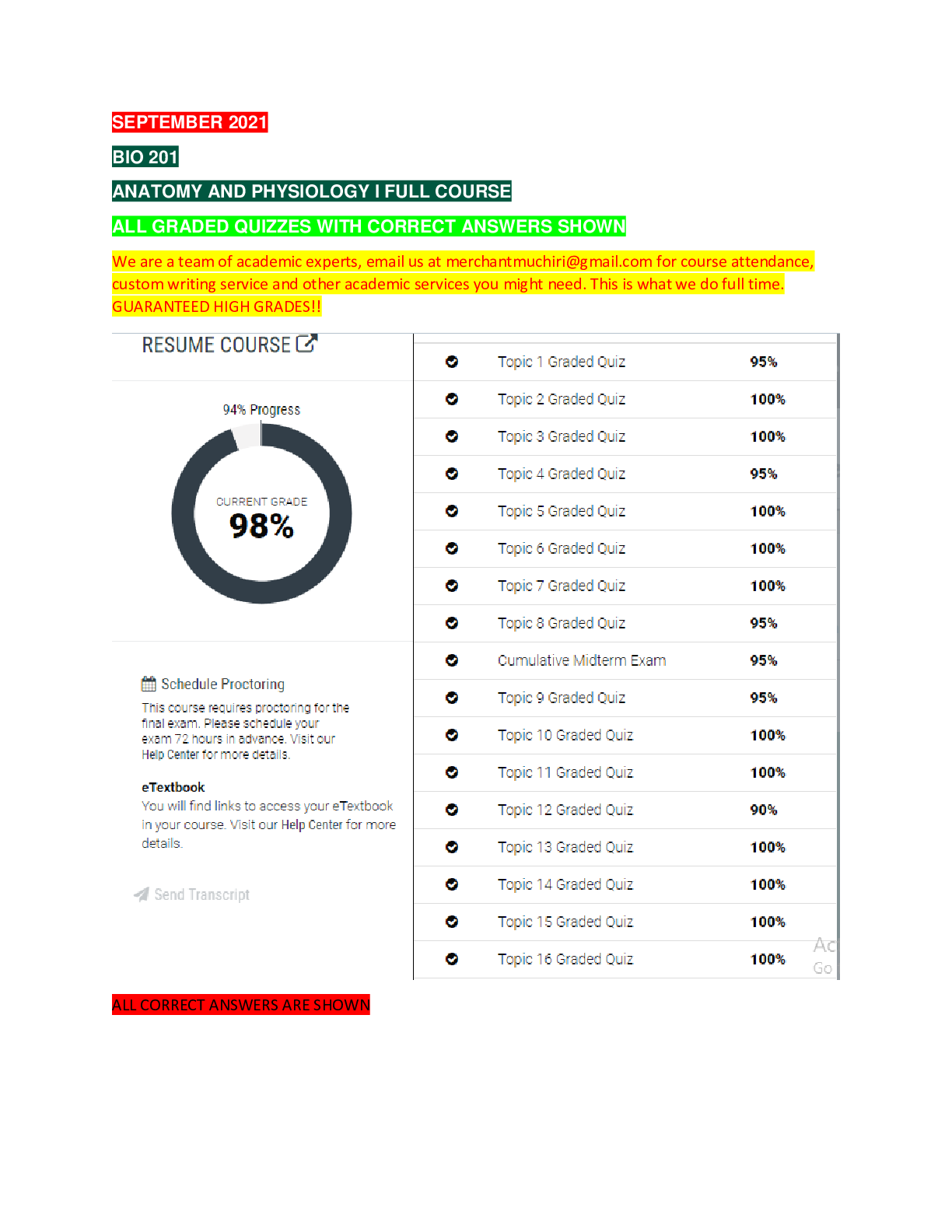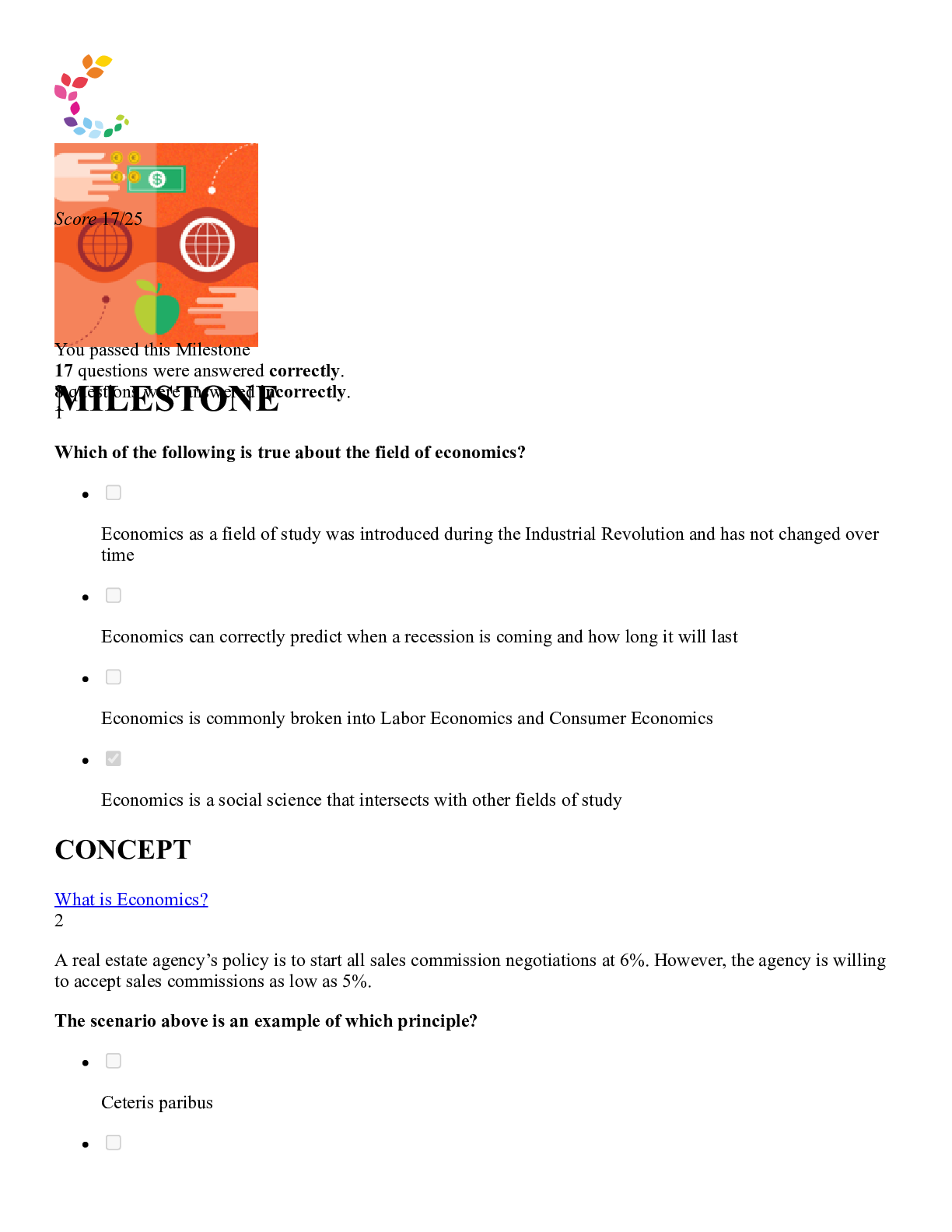HESI A2 Practice Questions A+ Grade
Document Content and Description Below
HESI A2 Practice Questions Questions 1 to 4 pertain to the following passage: Protozoa are microscopic, one-celled organisms that can be free-living or parasitic in nature. They are able to multipl... y in humans, a factor which contributes to their survival and also permits serious infections to develop from just a single organism. Transmission of protozoa that live in the human intestine to another human typically occurs by a fecaloral route (for example, contaminated food or water, or person-to-person contact). Protozoa that thrive in the blood or tissue of humans are transmitted to their human hosts by an arthropod vector (for example, through the bite of a mosquito or sand fly). Helminths are large, multicellular organisms that are generally visible to the naked eye in their adult stages. Like protozoa, helminths can be either free-living or parasitic in nature. In their adult form, helminths cannot multiply in humans. There are three main groups of helminths (derived from the Greek word for worms) that are human parasites: Flatworms (platyhelminths) – these include the trematodes (flukes) and cestodes (tapeworms) [Show More]
Last updated: 2 years ago
Preview 1 out of 5 pages
.png)
Buy this document to get the full access instantly
Instant Download Access after purchase
Buy NowInstant download
We Accept:

Reviews( 0 )
$6.00
Can't find what you want? Try our AI powered Search
Document information
Connected school, study & course
About the document
Uploaded On
Mar 16, 2021
Number of pages
5
Written in
Additional information
This document has been written for:
Uploaded
Mar 16, 2021
Downloads
0
Views
74










.png)
.png)


